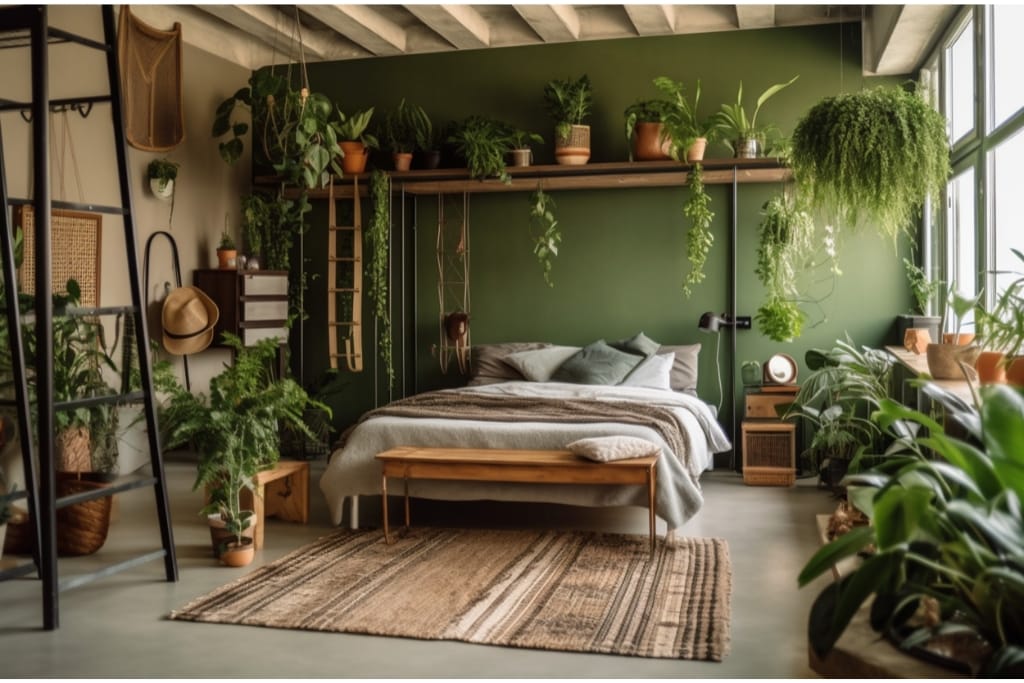Taking care of potted plants while on vacation is essential to ensure their health and vitality.
Many plants are sensitive to changes in their environment, particularly when it comes to watering.
A lack of adequate moisture can lead to wilting, stress, and even death during the days of absence.
Proper plant care not only preserves your investment in beautiful greenery but also contributes to their continued growth and overall well-being.
By planning and implementing suitable watering strategies, you can enjoy your time away with peace of mind, knowing your plants are well taken care of.
Keeping potted plants hydrated while away can present several challenges that require careful consideration.
One primary issue is the variability in water needs among different plant species, as some may require frequent watering while others thrive on minimal moisture.
Environmental factors such as temperature, humidity, and light exposure can greatly influence how quickly soil dries out.
When left unattended, potted plants in small containers can dry out rapidly, leading to significant stress or even permanent damage.
Furthermore, homeowners might struggle with lacking the right tools or methods for effective watering, making it crucial to find a reliable solution that fits both the plants' requirements and the owner's absence duration.
To ensure your potted plants remain hydrated during your vacation, several effective solutions can be employed.
First, consider investing in a self-watering system, such as reservoir pots or watering globes, which can help maintain consistent moisture levels.
Alternatively, drip irrigation setups provide a more automated approach, allowing for regular watering without you needing to be present.
For those seeking a more hands-on method, traditional techniques like using bottles with holes or placing wicks in pots can offer a simple and resourceful way to deliver water to your plants while you're away.
By evaluating these various strategies, you can select the method that best suits your plant's needs and your schedule, ensuring their health and vitality during your time off.
Step 1: Assess Your Plants' Water Needs
Before leaving for vacation, it is crucial to assess the watering needs of your potted plants, as this forms the foundation for effective care during your absence.
Different plants require varying amounts of water based on their species, size, and environmental conditions.
Understanding these specific needs allows you to tailor your watering strategy to each plant’s requirements, ensuring they remain healthy and hydrated.
By identifying the moisture levels in the soil and grouping plants with similar needs, you can create a comprehensive plan that reduces the risk of overwatering or underwatering while you are away.
Taking the time to carefully evaluate your plants' hydration requirements is the first step towards maintaining their vitality in your absence.
Identify The Types Of Plants You Have And Their Specific Watering Requirements
Identifying the types of plants you have and understanding their specific watering requirements is crucial for providing appropriate care during your vacation.
Each plant species has its own unique moisture needs; for example, succulents and cacti thrive in dry conditions, while tropical plants often require consistently damp soil.
Begin by researching or consulting plant care resources to ascertain the ideal watering practices for each type.
Consider the size of the plants and their pots, as larger pots tend to retain moisture longer than smaller ones.
By compiling this information, you can create a tailored watering schedule that aligns with the characteristics of your plants, ensuring they receive the right amount of hydration while you are away.
Check The Soil Moisture Levels Before Leaving To Determine How Much Water Is Needed
Checking the soil moisture levels before you leave for vacation is an essential step to determine how much water your potted plants need during your absence.
Begin by using your finger to probe the top inch of the soil; if it feels dry at this depth, it's a clear indication that your plants require watering.
For a more precise assessment, consider using a moisture meter, which can provide accurate readings of the soil’s moisture content throughout the pot.
This evaluation not only helps you identify which plants need immediate attention but also allows you to calibrate your watering schedule based on their specific requirements.
By ensuring the soil is adequately moist before you leave, you can significantly reduce the risk of stress or damage to your plants during your time away.
Group Plants With Similar Watering Needs To Simplify Care
Grouping plants with similar watering needs is an effective strategy to simplify your care routine while you’re away.
By arranging plants that share comparable moisture requirements, you can streamline the watering process and ensure that each plant receives the appropriate amount of hydration.
For instance, you might cluster tropical plants together, which generally need more consistent moisture, and separate them from drought-tolerant species like succulents and cacti.
This not only makes it easier to monitor their water needs but also helps in planning an efficient watering schedule that minimizes the risk of overwatering or underwatering.
Creating these groupings allows for a more manageable approach to plant care, ensuring that all your potted plants thrive during your absence.
Step 2: Choose A Watering Method
After carefully assessing your plants’ water needs and grouping them accordingly, the next vital step is to choose an appropriate watering method for your absence.
Selecting the right technique can greatly impact your plants' health, as it ensures they receive consistent hydration while you are away.
Various methods are available, ranging from simple DIY solutions to more advanced automated systems, each with its advantages depending on your plant's specific requirements and preferences.
By evaluating the options available to you—such as self-watering pots, drip irrigation, or traditional watering techniques—you can make an informed decision that aligns with the needs of your plants and the duration of your vacation, ensuring they remain vibrant and healthy during your absence.
Explore Self-Watering Systems
Exploring self-watering systems, such as reservoir pots or globes, can be an excellent solution for keeping your plants hydrated during your time away.
These innovative devices are designed to supply water gradually, ensuring that soil remains consistently moist without the risk of overwatering.
Reservoir pots often incorporate a built-in water reservoir that allows plants to absorb moisture as needed, while watering globes release water slowly into the soil when the moisture level drops.
Both methods promote healthier root growth and reduce your overall maintenance tasks, making them particularly useful for those with busy schedules or extended vacations.
By investing in self-watering systems, you can provide your plants with a reliable source of hydration, offering peace of mind as you enjoy your time away.
Consider Drip Irrigation Setups For A More Automated Approach
Considering a drip irrigation setup offers a more automated approach to watering your plants, providing a highly efficient and customized solution tailored to their needs.
This system delivers water directly to the base of each plant through a network of tubes and emitters, ensuring that moisture is focused where it’s needed most.
By scheduling the timing and frequency of watering, you can maintain optimal soil moisture levels without having to rely on manual intervention.
Drip irrigation reduces water waste and minimizes the risk of overwatering; it can be easily adjusted based on your plant's specific requirements and environmental conditions.
This method not only helps maintain the health of your plants during your absence but also allows you to enjoy peace of mind knowing they are being cared for systematically.
Use Traditional Methods
Utilizing traditional methods for watering plants, such as placing wet towels or bottles with holes in the soil, can serve as an effective DIY solution during your absence.
Wet towels can be arranged around the base of the plants to provide gradual moisture release, helping to keep the soil consistently damp.
Alternatively, by filling a bottle with water and creating small holes in the cap, you can create a simple watering device that allows water to seep slowly into the soil, maintaining hydration as the plants draw moisture over time.
These methods are not only economical but also easily accessible, making them appealing options for those who prefer to stick with low-tech solutions for their plant care.
By employing these traditional techniques, you can ensure your plants receive the necessary moisture without the need for complex setups or equipment, allowing you to enjoy your time away with confidence.
Step 3: Prepare Your Plants For Your Absence
Preparing your plants for your absence is a crucial step in ensuring their well-being while you're away.
This process involves not only implementing the watering method you've chosen but also making necessary adjustments to your plant care regimen to optimize their Beforeonditions.
Before your departure, you should assess factors such as lighting, temperature, and humidity to create a stable environment that promotes your health.
By taking the time to prepare your plants adequately, you can minimize stress factors that may occur during your absence and set them up for flourishing growth until your return.
Prune Any Dead Leaves Or Flowers To Reduce Water Loss
Pruning any dead leaves or flowers is an essential step in preparing your plants for your absence, as it helps to reduce water loss and promote healthier growth.
By removing dead or wilted foliage, you allow the plant to redirect its energy towards new growth and overall vitality.
This not only prevents unnecessary evaporation but also improves air circulation around the plant, reducing the risk of pests and diseases.
Pruning can enhance the aesthetic appeal of your plants, making them look tidier and more vibrant.
Taking this proactive measure ensures that your plants are in the best condition possible, enabling them to thrive during your time away.
Move Plants To A Location With Indirect Sunlight
Moving your plants to a location with indirect sunlight is a smart strategy to slow down evaporation and conserve moisture while you’re away.
Direct sunlight can cause soil to dry out rapidly, leading to increased water loss and stressing your plants.
By relocating them to a shadier spot where they receive filtered light, you can help maintain a more stable temperature and humidity level around the plants.
This change not only reduces the rate at which water evaporates from the soil but also diminishes heat stress on the plants themselves.
Furthermore, this simple adjustment can prolong the health of your plants during your absence, allowing them to flourish despite your temporary departure.
Set Up A Plant Sitter To Check On Your Plants
Setting up a plant sitter or asking a friend to check on your plants can be a vital strategy for ensuring their health during an extended absence.
This personal touch allows for regular monitoring and care that automated systems may not fully replicate.
A plant sitter can provide not only essential watering but also assess the overall condition of your plants, making adjustments as necessary based on changes in their environment.
A caring friend can offer companionship for your plants, ensuring they receive the attention they need, such as pruning, repositioning, or addressing any pest issues that might arise.
By entrusting your greens to someone you know, you can enjoy peace of mind, knowing your plants are receiving the care they deserve while you’re away.
Tips for Choosing the Right Plant Sitter:
- Experience Matters: Look for someone with prior experience caring for plants, as they will be better equipped to handle specific needs and potential issues.
- Availability: Ensure the sitter is available for the duration of your absence and can commit to the scheduled visits your plants require.
- Communication: Choose someone communicative and willing to provide updates on your plants, offering peace of mind while you're away.
- Trustworthiness: Select a reliable friend or professional that you trust to access your home and care for your plants responsibly.
- Knowledge of Your Plants: Ideally, the plant sitter should be familiar with the specific types of plants you have, understanding their unique hydration and sunlight needs.
Selecting the right plant sitter is essential for ensuring your plants receive the care they need during your absence.
By considering factors like experience, availability, and trustworthiness, you can rest assured that your green companions will be in good hands.
A well-chosen plant sitter not only contributes to the health of your plants but also provides you with the peace of mind that allows you to enjoy your time away without worry.
Taking these steps will help ensure your plants thrive until your return.
Conclusion
Planning for plant care is essential to ensure the health and vitality of your plants, especially when you anticipate being away for an extended period.
A well-thought-out care regimen helps mitigate stressors that can arise in your absence, such as fluctuations in light, humidity, and water availability.
By taking proactive steps—like adjusting watering methods, relocating plants to suitable environments, and enlisting the help of a plant sitter—you can create a nurturing atmosphere that supports growth and resilience.
Moreover, having a solid plan not only safeguards your plants’ well-being but also allows you to enjoy your time away with confidence, knowing that your green companions are thriving in your absence.
Finding the best method for plant care that suits your lifestyle and specific plant needs is crucial for maintaining a thriving indoor garden.
Each plant has unique requirements in terms of water, light, and humidity, and it’s important to tailor your care strategy accordingly.
Consider your schedule and commitments when selecting a watering method—whether it's a simple self-watering system, the use of a plant sitter, or employing traditional techniques like grouping your plants in a way that optimizes humidity.
By taking the time to assess both your plants and your routines, you can implement an effective care plan that aligns with your lifestyle, ensuring that your greenery flourishes even during your absence.
This personalized approach fosters a deeper connection with your plants and promotes their long-term health and vitality.
Download Our Free E-book!







